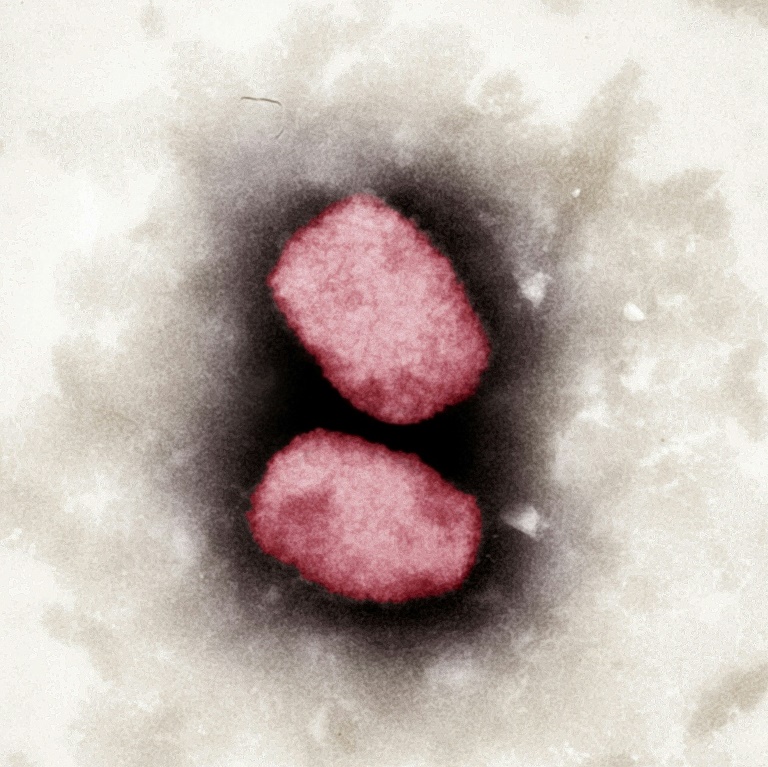Quantum light unlocks nature’s tiny secrets

A file photo from 2001 shows a colored electron-microscopic capture of the monkeypox virus – Copyright AFP Rizwan TABASSUM
Scientist based at the University of Michigan have discovered a way to examine tiny structures, like bacteria and genes, with reduced damage when compared to traditional light sources.
The new technique involves the use of spectroscopy. This is the study of how matter absorbs and emits light and other forms of radiation. The new approach takes advantage of quantum mechanics in order to study the structure and dynamics of molecules. This provides insights that are not possible using conventional light sources.
The technique is ‘entangled two-photon absorption’ and this allows researchers to study molecules by using two photons that are interconnected through the quantum phenomenon known as entanglement.

According to lead scientist Theodore Goodson, U-M professor of chemistry and of macromolecular science and engineering: “This research examined a quantum light spectroscopy technique called entangled two-photon absorption that takes advantage of entanglement to reveal the structures of molecules and how ETPA acts at ultrafast speeds to determine properties that cannot be seen with classical spectroscopy.”
Photons are the smallest possible particles of electromagnetic energy and, therefore, also the smallest particles of light, allowing details about the molecule’s structure to be visible at a level that cannot be shown with regular light.
The technique of quantum light spectroscopy has proved to very fast as well as in revealing properties that are usually hidden.
With the technique, the research team used an organic molecule called zinc tetraphenyl porphyrin (ZnTPP) to study the phenomenon of two-photon absorption. This is where a molecule simultaneously absorbs two particles of light instead of one.

It was found that using pairs of photons that were quantumly entangled, the ZnTPP molecule exhibited absorption in the red spectrum. With two untangled photons, the ZnTPP molecules showed absorption in a blue spectrum.
A laser produced pairs of entangled photons through a process called spontaneous parametric down-conversion. These photons were then focused onto a cuvette containing the ZnTPP solution. The transmission was measured using a highly sensitive single-photon detector.
This opens up non-invasive, low-intensity imaging and sensing applications with minimal photodamage to delicate biological samples like proteins, DNA, and living cells – biological signatures with high selectivity.
Another advantage is that the technique, through using very low light levels, protects specimens against photodamage.
This work paves the way for the advancement of quantum light-based spectroscopy and microscopy, potentially leading to much higher efficiency of ETPA sensors and low-intensity detection schemes.
The research has been published in the Proceedings of the National Academy of Sciences. The paper is titled “Colors of entangled two-photon absorption.”
Quantum light unlocks nature’s tiny secrets
#Quantum #light #unlocks #natures #tiny #secrets





